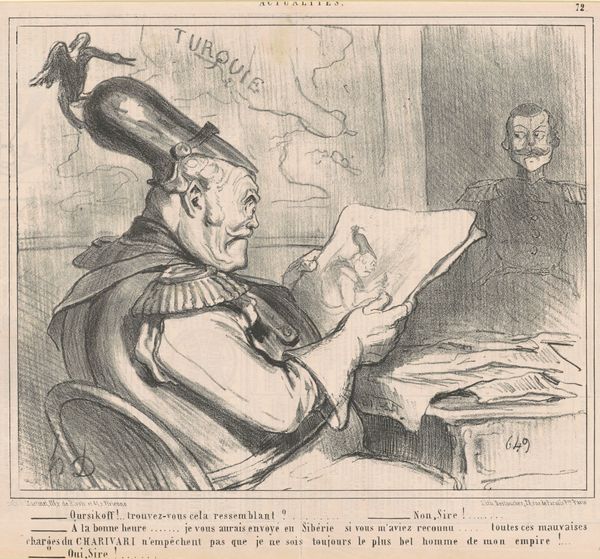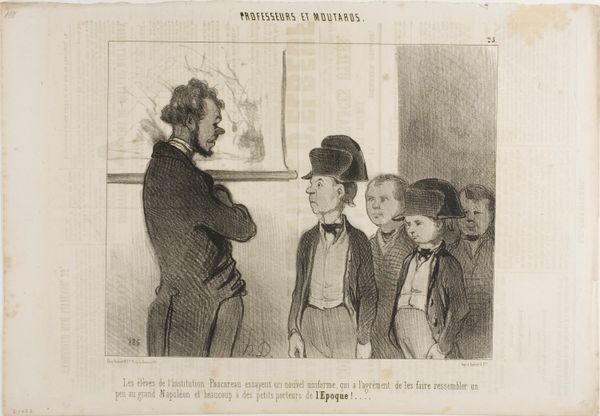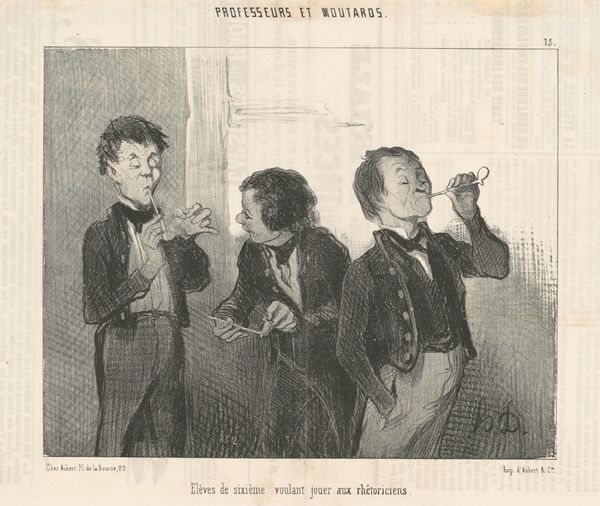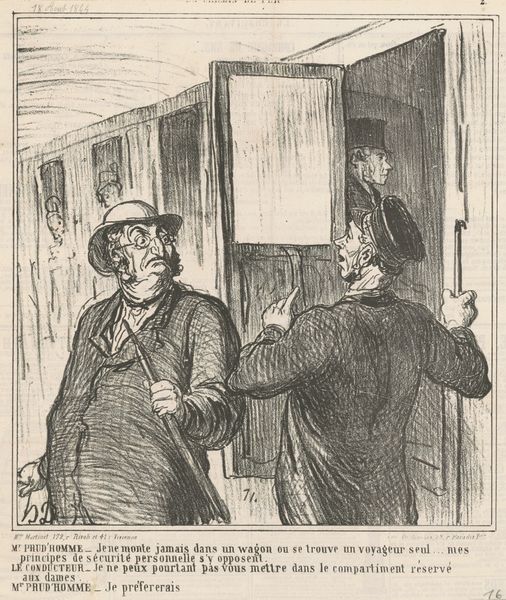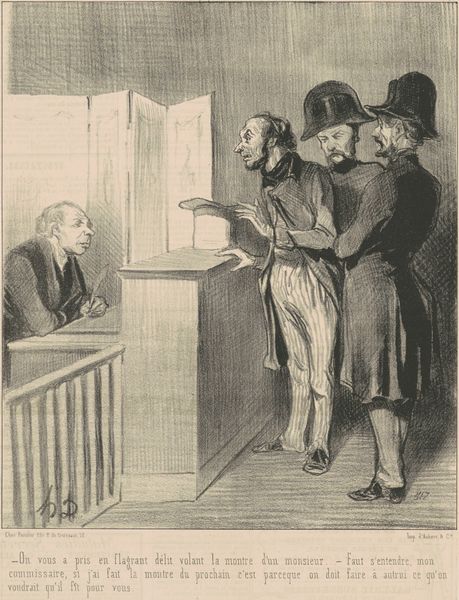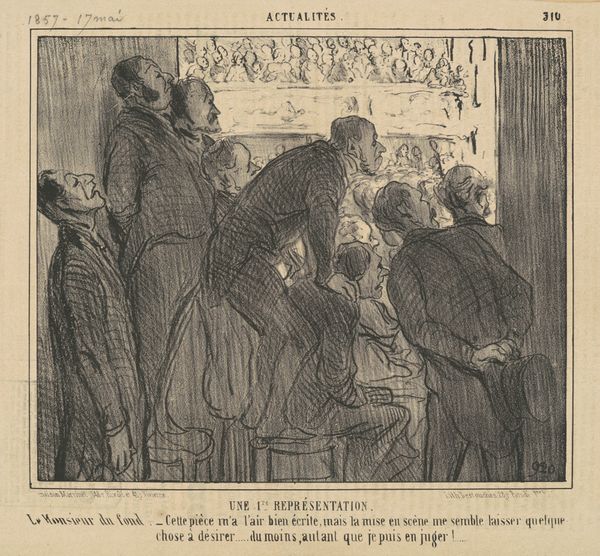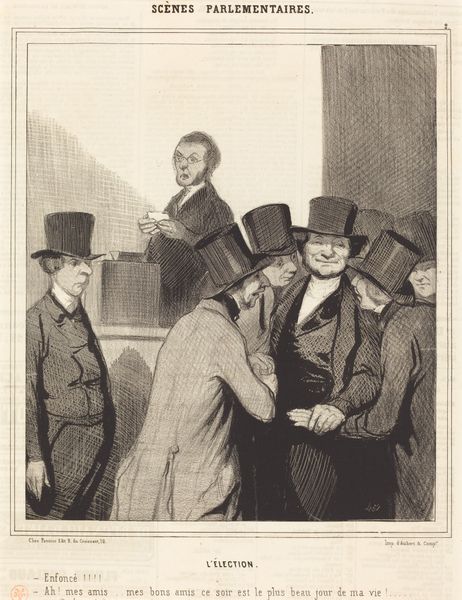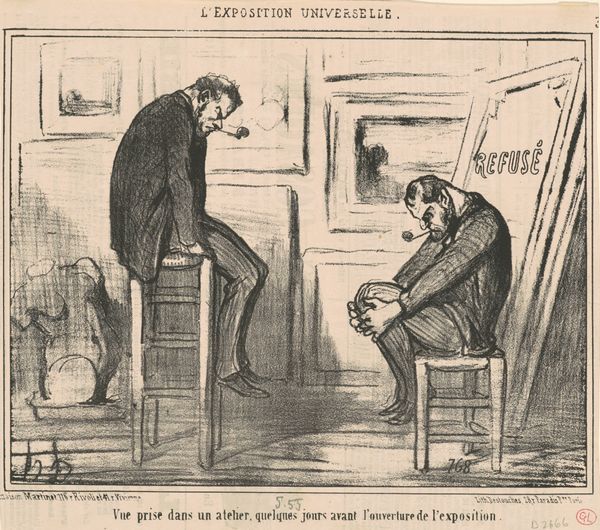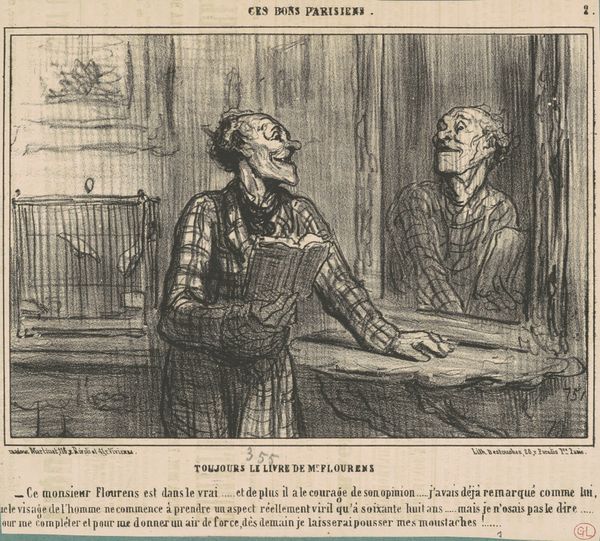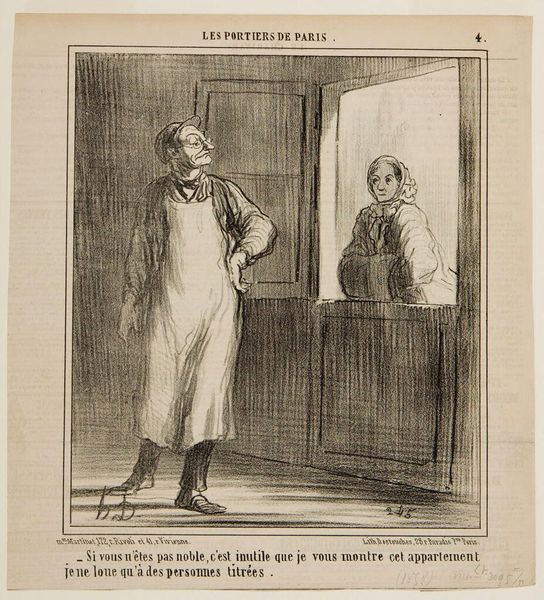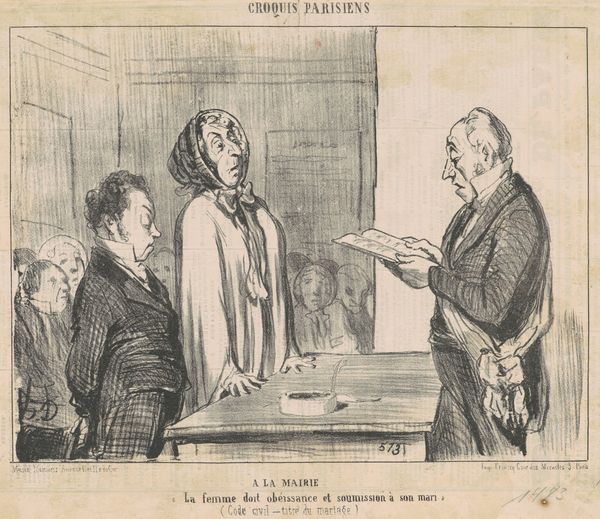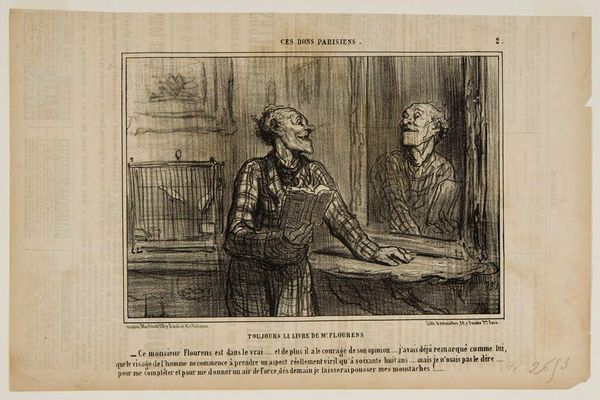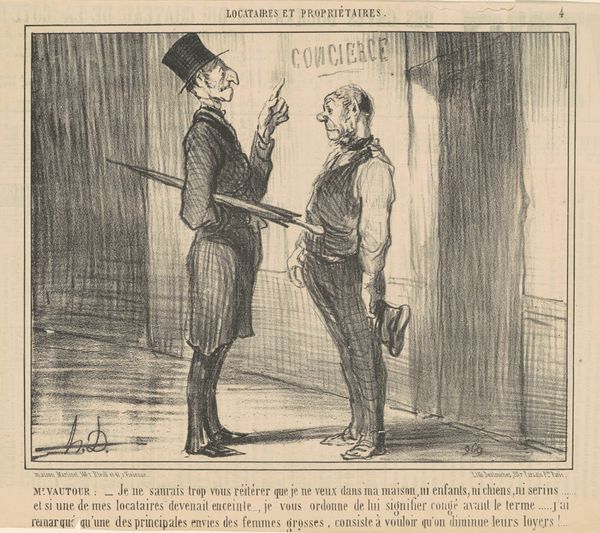
lithograph, print
#
lithograph
# print
#
caricature
#
19th century
#
genre-painting
#
history-painting
Copyright: National Gallery of Art: CC0 1.0
Curator: Here we have Honoré Daumier's lithograph from 1845, "Comment on devient un grand mathématicien," or "How one becomes a great mathematician." Editor: My first impression is the intensity of the frustrated student is palpable! Look at the exaggerated gestures and expressions captured in these stark black lines. Curator: Exactly. This work, part of the series "Professeurs et Moutards," critically examines the power dynamics within the French education system, particularly focusing on the social production of knowledge. Notice the context: a cramped classroom and the students crammed behind. Editor: Visually, the contrast between the detached teacher and the explosively emotional student really jumps out. The formal composition—the rigid figure on the right versus the chaotic cluster on the left—underscores that tension beautifully. Curator: Yes, Daumier is highlighting the means of controlling individuals and shaping conformity. Consider the print medium itself—a mass-produced image easily disseminated—reflecting the industrialization of education and knowledge. Editor: The lines, almost crude in their simplicity, create an almost immediate sense of discord and humor. I'm drawn to the visual language itself – the bold strokes that communicate not only physical forms but psychological states as well. Curator: It’s worth thinking about the labour behind creating these lithographs too; Daumier himself, and the print shop workers, contributing to a critical discourse aimed at the middle classes. The artist being socially conscious by being conscious of his social labor. Editor: In this regard, how this is made only emphasizes how immediate and of-the-moment is the image. In its lack of subtlety is its undeniable ability to immediately relate a feeling. Curator: It’s a compelling insight into Daumier’s socio-political concerns. Seeing the structures behind power and knowledge is fascinating. Editor: Absolutely. Daumier's genius lies in his ability to reveal emotional complexity within a rigid framework—it's a reminder that, beyond political messages, lie these fundamental observations on society.
Comments
No comments
Be the first to comment and join the conversation on the ultimate creative platform.
